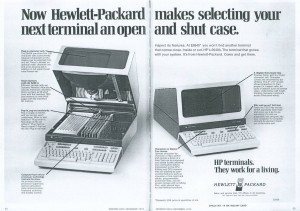Alumni Memories from Bob Gaebler
Editor’s Note: Grace Hopper (December 9, 1906 – January 1, 1992) was an American computer scientist and United States Navy rear admiral. She was one of the first programmers of the Harvard Mark I computer in 1944, and she invented the first compiler for a computer programming language. Hopper helped promote the idea of machine-independent programming languages which led to the development of COBOL. She is also credited with popularizing the term “debugging” for fixing computer glitches (in one instance, removing a moth from a computer). Grace Hopper visited Rolla in 1974 and Alumus, Bob Gaebler, shares his memory of that event.
I attended Grace Hopper’s lecture in the evening. It was not only very charming, but it was informative and inspiring to the point that I still apply some of the insights and lessons she transmitted in that talk.
As for the charming part, she presented her now famous object lesson in which she learned what a nanosecond was – holding up a piece of wire about a foot long, and relating how, early in her career, an engineer explained to her that light travels that distance in the space of a nanosecond, cutting a piece of wire to length so that she could better visualize it. She then related how, when that engineer later mentioned a microsecond, she asked for help in visualizing THAT small time interval. The engineer cut for her a visual aid for that unit of time as well – at this point Grace held up a huge coil of wire about 100 yards long, to universal laughter from the audience. At the end of her evening talk, she passed out free samples of a nanosecond, to any who were interested, as souvenirs of her visit.
Bob Gaebler
B.S. Computer Science, 1977
Marion, IA







